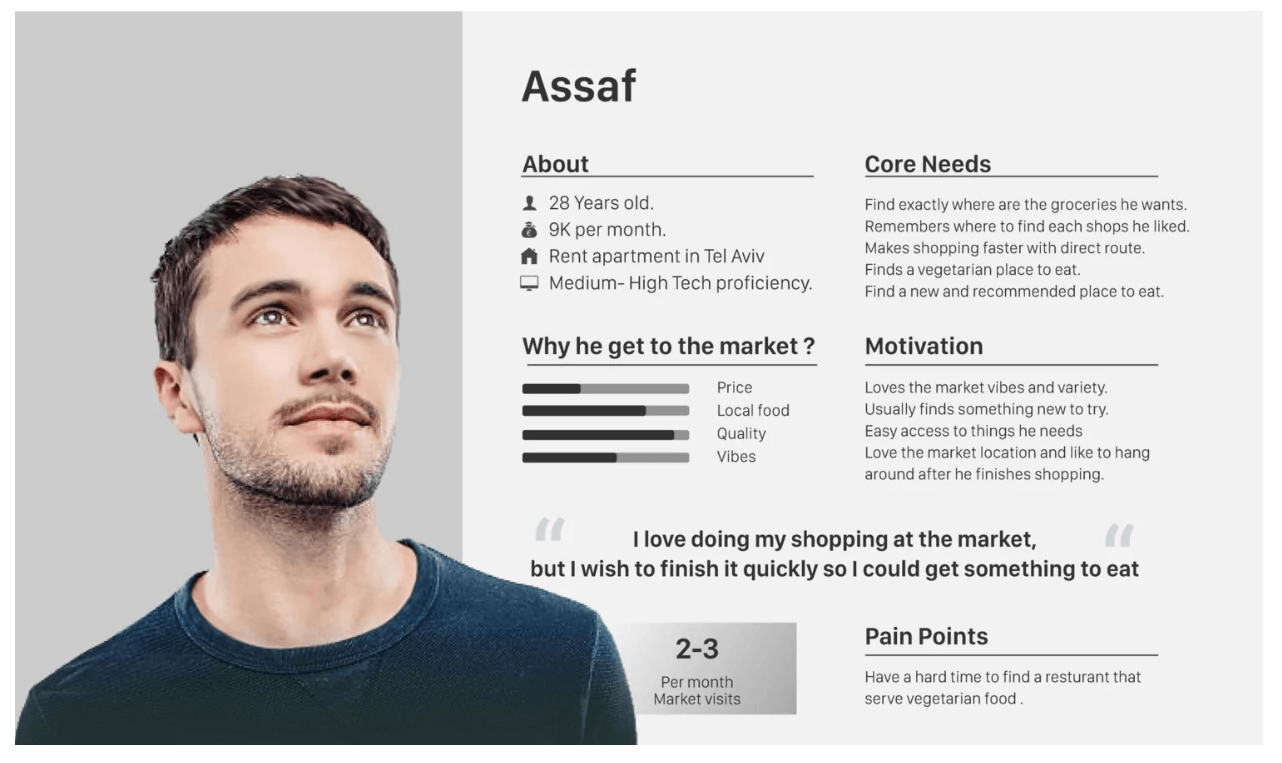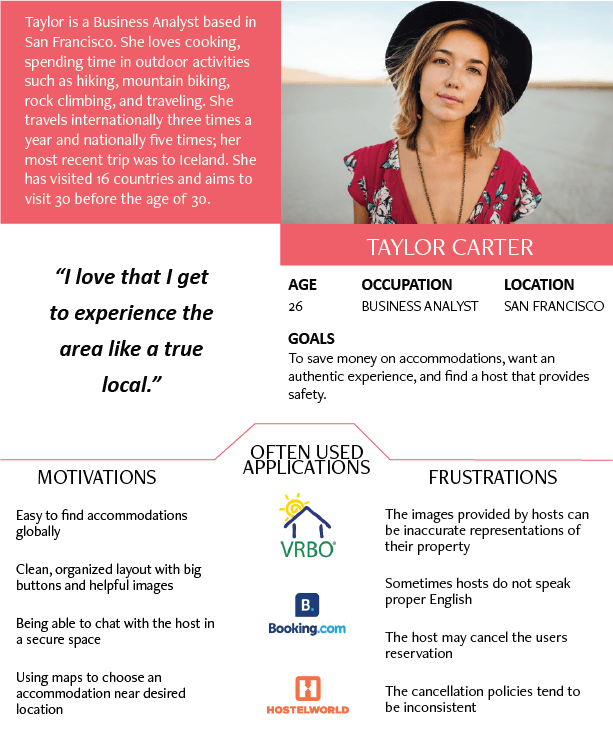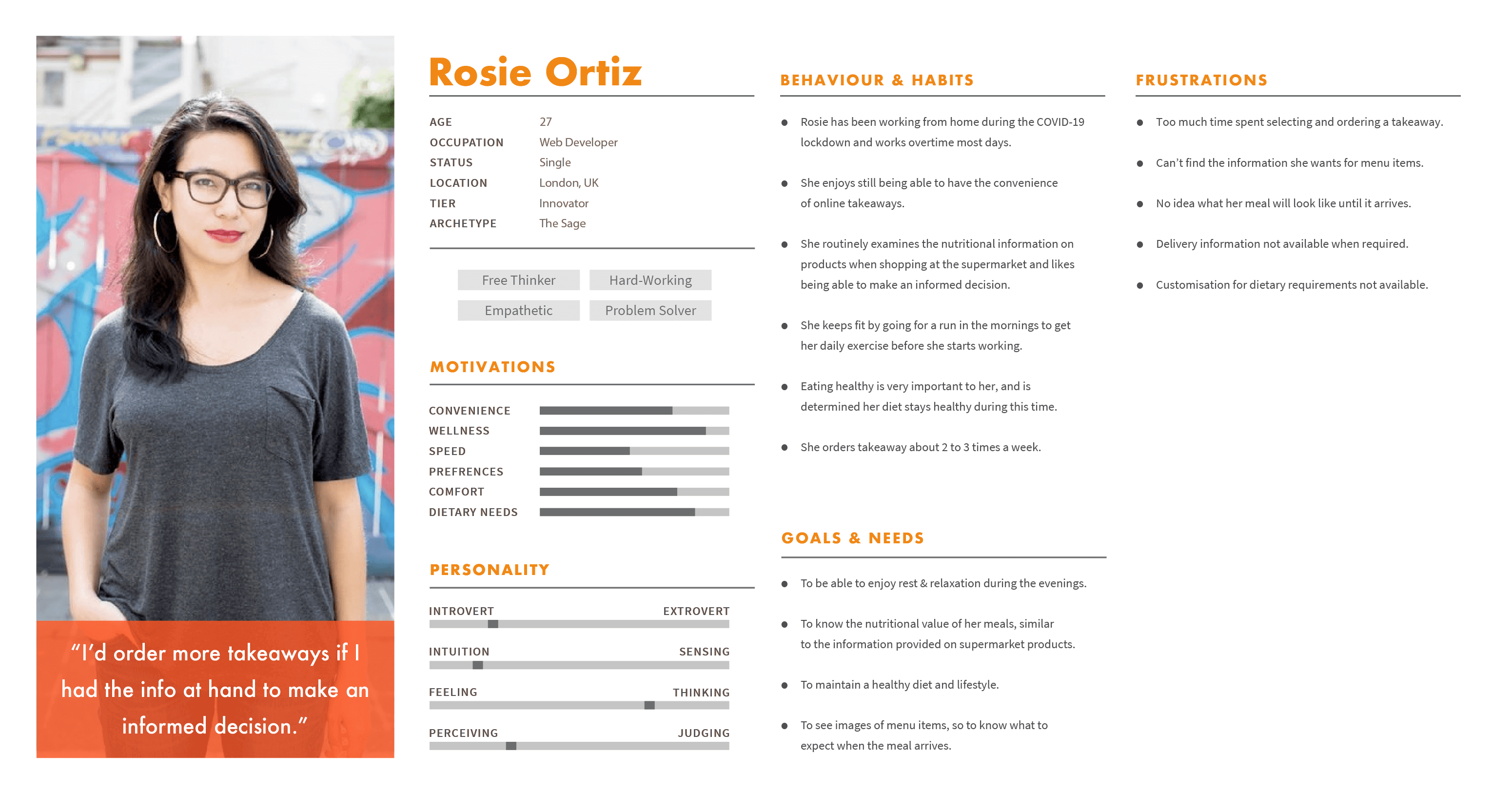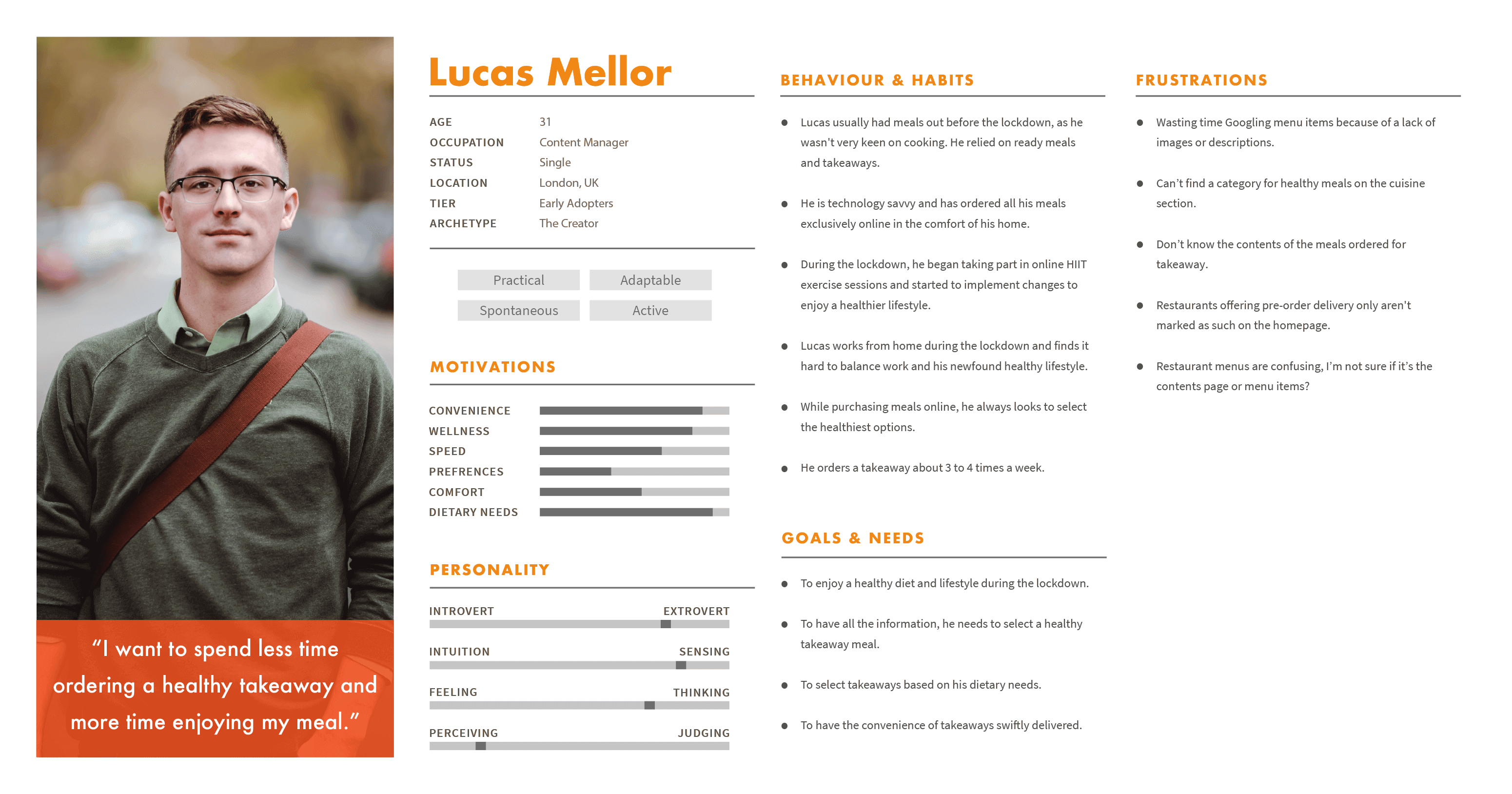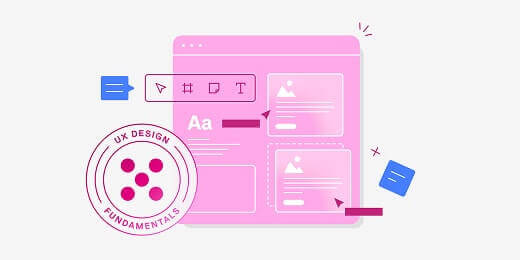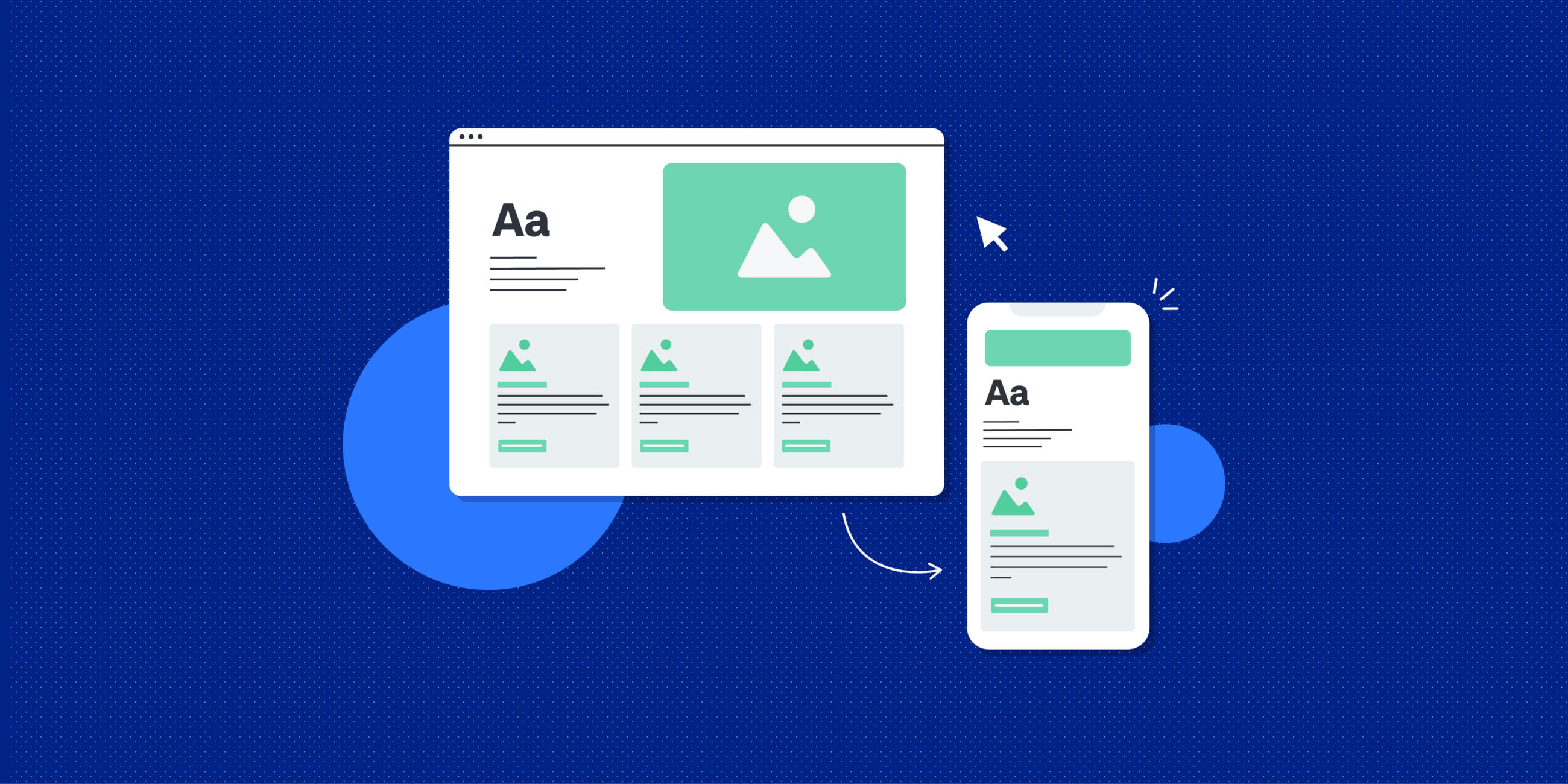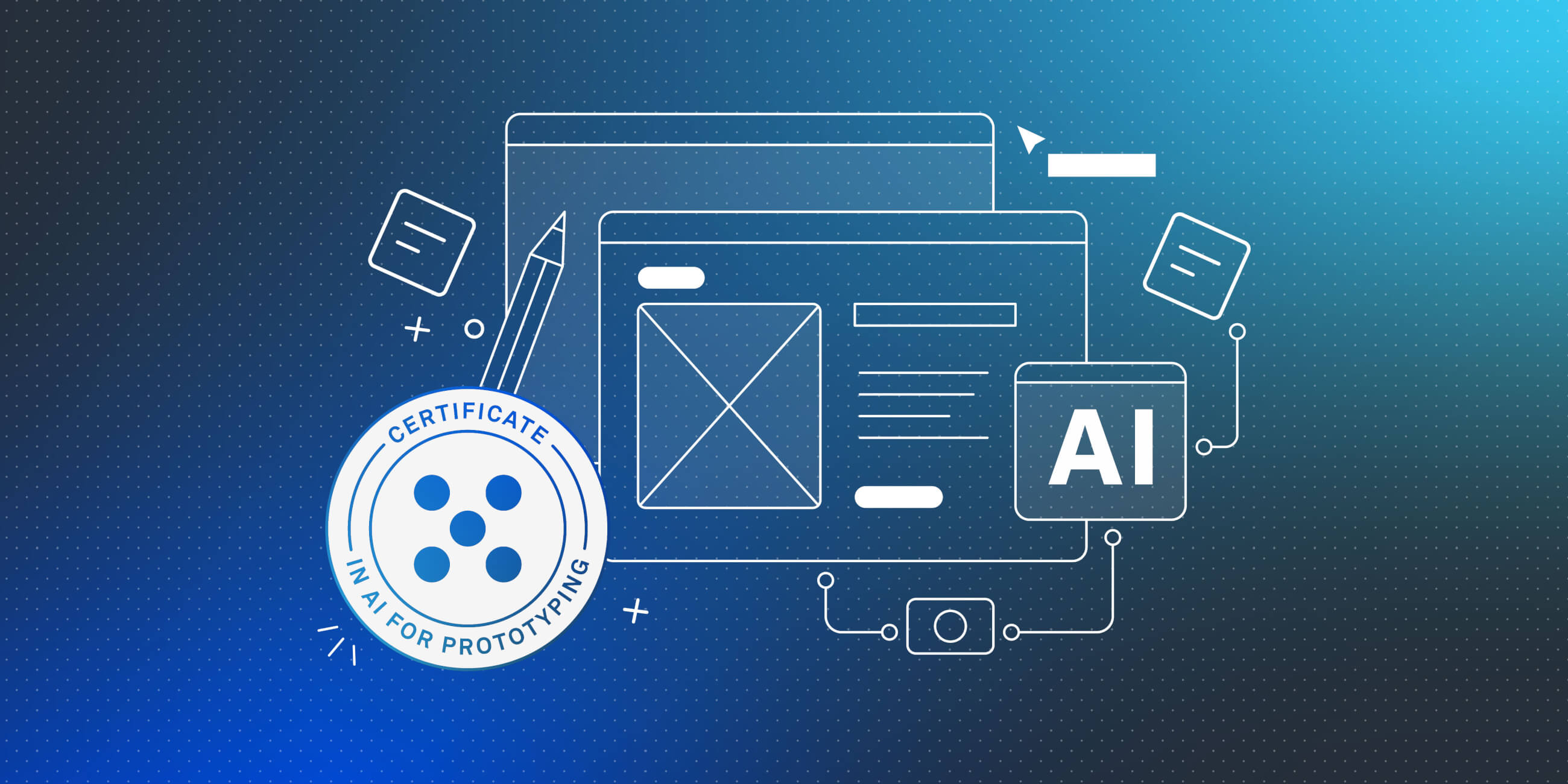A UX persona is a fictional character which represents your target users. Personas are an extremely valuable UX tool, allowing you to better understand your target audience and make design decisions accordingly.
New to UX personas? Keep reading to learn more about what a UX persona is, what they’re used for, and how to create your own.
Looking for something specific in this article? Click the below links to reach that content faster:
- What is a UX persona?
- What are personas used for in UX?
- What are the different types of personas in UX?
- UX persona examples
- How to create a persona to better understand your target audience
What is a UX persona?
A persona is a fictional character which represents certain traits and qualities of real users. In UX, personas are an important tool for understanding and empathising with your target audience.
Personas are usually captured in a document or presentation deck, providing an easily digestible visualisation of your target user(s). Personas comprise a mixture of text and icons/graphics and you can also give them a face. For example, you might get a custom-drawn illustration or use a stock image.
Although personas are fictional, they should be based on facts and data about real users. This is obtained through user research and any behavioural data you may have gathered in relation to the product you’re designing.
What are personas used for in UX?
Personas in UX design are a great tool for building empathy and keeping the user at the centre of the design process.
To create a persona, UX researchers and designers must pull out and capture the most important, valuable information they have about their users. In doing so, they’re compelled to step into the user’s shoes and dig deep into who they are and what they need. As such, the persona creation process alone fosters a deeper understanding of your target audience.
Once you’ve created a UX persona (or personas), you’ve got a clear point of reference which you can turn to at any point in the design process. Personas will help you to make user-focused design decisions and to shape the overall direction of the product. You can (and should) always ask yourself: What would Persona X need or want here? What would be their preference? What would help them the most?
At the same time, UX personas make it easier to communicate and share your user research findings with others (especially those outside of the design team). Anyone can glance at your personas and immediately understand who you’re designing for and why — making it easier to justify your design decisions and get buy-in from key stakeholders.
Ultimately, UX personas:
- Capture your user research in a digestible, visual format
- Build user empathy and make sure the design process prioritises the target audience’s needs
- Steer, inform and justify design decisions
- Enable others to understand who you’re designing for
When to create UX personas
You will ideally create UX personas in the research phase of the project, before the design phase gets going. But you have to get your research done first. That’s because, while your personas are fictional, they are based on a composite of real users. If you create a persona based on your own ideas of who you want your target audience to be rather than who they actually are, your product has the potential to go wildly off track.
So don’t risk it. Gather your research, whether it be surveys, interviews, field studies, focus groups, or other research methods, and define the characteristics of your typical users. Then from that data you can create your personas.
What are the different types of personas in UX?
The type of UX persona(s) you create will depend on the resources you have available, as well as the specific purpose you want your persona(s) to serve.
There are generally 3 different approaches you can take to creating a UX persona:
- The quick, lean “proto” method
- The qualitative method
- The statistical or mixed-method
We’ll explain these different approaches now.
Proto personas
Proto personas are created rapidly, based on existing knowledge about the target audience. When creating proto personas, you don’t conduct any new user research. You use any research/data you’ve already got or rely on your own (and your team’s) guesses and assumptions.
Proto personas tend to be created within the context of a workshop. They’re a good way to externalise and capture people’s implicit assumptions about the target audience — but, of course, the fact that they’re not informed by real data or research is a big drawback.
Still, proto personas are a good option if you’re short on time and resources — and they’re a better alternative to having no personas at all.
Qualitative personas
Qualitative personas are based on qualitative research (such as interviews), usually involving a small-medium sample of users. These are a step up from proto personas as they’re informed by real data. And, because they’re based on small-scale user research, you don’t need endless time and resources to create qualitative personas.
Statistical or mixed-method personas
Statistical personas are the most comprehensive and thorough UX persona type. They rely on both quantitative and qualitative research. Typically, they involve a much larger sample of users.
To create statistical or mixed-method personas, you’ll first conduct qualitative research (much the same as with qualitative personas) to identify commonalities and themes that repeatedly come up. From there, you’ll create a survey to collect quantitative data from a much wider user sample in order to validate (or invalidate) your initial findings.
Statistical personas are comprehensive but time-consuming, so they may not be an option for every team.
What does a UX personas look like?
UX personas are typically comprised of a combination of text and images representing a “typical” user of your product. This means a UX persona will include:
- The persona’s name
- An image (e.g. an illustration, avatar, photo or stock image)
- Demographic information such as your persona’s age, gender, family/living situation, employment status and anything else that’s relevant to your product or problem space
- Their needs and goals in relation to your product
- A summary of their challenges, frustrations and pain points in relation to your product or problem space
- Quotes from real users whom the persona should represent
For instance, the example above represents all of these things in a persona about going to the grocery market. After opening on the person’s image, the persona’s name is at the top of the persona, followed by their demographics. This is followed by their needs, motivations, and challenges on grocery shopping and a quote from a real user.
If you’re creating multiple UX personas to represent different segments of your user base, you can also assign each persona a tagline or label. This helps to distinguish between the different personas, make them memorable. It also clearly and succinctly capture which user group your persona represents. For example, if you create two UX personas who each have very different spending habits, you might dub them “The Spender” and “The Saver.”
UX persona examples
If you’re new to the topic of UX personas, it can be useful to see how other designers approach the task. Here are some UX persona examples to inspire you.
Sneha Kulkarni’s Airbnb user persona
Sneha Kulkarni, an interaction designer, created a UX persona for Airbnb based on qualitative research. She conducted five user interviews and sourced additional data on Airbnb users.
She ended up with UX persona Taylor, a business analyst based in San Francisco who loves cooking, being outdoors and tends to travel internationally three times a year. Taylor’s frustrations and pain points when using Airbnb include inaccurate images, language barriers between her and the Airbnb hosts and inconsistent cancellation policies.
Image taken from Sneha Kulkarni’s portfolio website
Hanna Soleimanzadeh’s Just Eat UX personas
As part of her unsolicited redesign of the Just Eat platform, Hanna Soleimanzadeh created two UX personas. She used a mixed method approach; sending out an online survey which garnered 50 responses and conducting interviews with five Just Eat users.
She came up with two UX personas: Rosie Ortiz and Lucas Mellor. Rosie is a single 27-year-old web developer who works from home and her main motivations in relation to ordering takeaway are wellness, convenience and dietary needs.
Lucas is a single 31-year-old content manager. His main goals are to enjoy a healthy diet and lifestyle while working from home, and to have all the information he needs to be able to find and order healthy takeaway meals.
Image taken from Hanna Soleimanzadeh’s portfolio website
Image taken from Hanna Soleimanzadeh’s portfolio website
For more UX persona examples, check out:
- 4 UX persona examples on the UXPin blog
- 5 User persona examples on the UserGuiding blog
You’ll also find some UX persona examples in our selection of the best UX portfolios — check them out here.
How to create a UX persona to better understand your target audience
Like most things in UX, creating personas is an iterative process. You’ll generally create them early on in the design process and then update and evolve them as you gather new insights.
Here are the main steps you’ll need to follow to create a UX persona:
1. Choose your approach
First, consider the time and resources you have available. Ideally, you’ll conduct at least small-scale qualitative research so you can base your UX personas on real user data. However, if you need to create personas rapidly and have limited resources, you can start with the lean “proto persona” method.
2. Conduct user research (or gather existing insights)
Your next step depends on whether you’re conducting user research or following the proto method.
If you’re going with the former, the next step is to plan and execute your user research. This involves recruiting participants, creating surveys and preparing interview questions, depending on your chosen approach.
For the proto persona method, you’ll need to plan a workshop with all key stakeholders whose insights you want to utilise. For maximum efficiency, incorporate the persona creation process into the workshop too, getting everybody to mock up their own personas and then bringing them together for a final version.
3. Synthesise your research
If you’ve conducted user research, you’re now going to analyse it. The goal is to find patterns and commonalities which allow you to identify different types of users. And, when we talk about different types of users, we’re mainly referring to user behaviours — i.e. how different user types behave and interact with your product or problem space.
4. Bring your UX persona to life
Now it’s time to turn your findings into a tangible UX persona. To start with, mock up a template outlining the general shape that your UX persona will take, as well as the key information you want to include. Here are some resources you can use for guidance:
- 5 Essentials for your user persona template (with examples)
- 30 Must-see user persona templates
- 18 Free user persona templates
With your template in place, start filling it out to bring your UX persona to life. Remember to add an image and give your UX persona a name—this will help to make them memorable and relatable.
5. Share and utilise your UX persona(s)
Once you’re happy with your UX persona (or personas), it’s important to make sure you leverage their full potential. Don’t keep them for yourself; share them with the wider company (or a selection of department reps) so that others can get to know and understand them.
Refer back to your UX personas throughout your design process and involve them in discussions about the direction of the product. Get in the habit of asking yourself – every step of the way – what would be most beneficial for your user personas? UX personas are an extremely valuable tool for putting the user first and creating products that actually meet your users’ needs, so don’t forget them.
UX persona tips and best practices
Here are some tips and best practices to keep in mind as you create your UX personas.
-
Go beyond demographics
Basic demographic points like age and gender are essential for a UX persona, but this should just be the jumping off point to a richer story. This includes a rundown of the persona’s goals, motivations, and pain points.
-
Use real data
It can be tempting to make up a persona from scratch or plug some new information into a persona that was used for another project. And while it’s legitimate to use the proto persona method some of the time, you should strive to use real data based on real, up-to-date insights you get from qualitative or quantitative research into your users as much as possible.
-
Avoid bias
Don’t jump to conclusions with your personas, as those conclusions are often the product of biases and stereotypes. Instead remain realistic with your personas rather than resorting to pre-conceived judgments.
One of the easiest ways to avoid bias is to only flesh out information about what causes behaviour. So, for example, if you’re developing a persona for an individual’s buying behavior at a grocery store, your personas should only deal with this topic. Plus, the personas should link back to the research data you’ve collected.
You should also make sure you aren’t leaving your team open to bias by the way you use names. For example, names like “Tami the teacher” or “Bruce the businessman” are memorable but open to preconceptions. You can change these preconceptions by, for instance, having an unexpected picture or reactions that aren’t stereotypical.
Should you use AI to create UX personas?
While AI programs like ChatGPT can certainly create UX personas, we only recommend AI as a supplement to speed up your persona creation. You shouldn’t rely solely on AI because it doesn’t always use real user data to build personas and can lack empathy and depth even if it does. That empathy and depth is a human characteristic and, therefore, real humans are required to create user personas.
While AI can help brainstorm ideas for user segments and personas, human beings should ultimately be responsible for creating personas with the data of real users at its core.
We’ve explored the importance of UX personas for centring the user in the design process. If you’re curious about how to balance user needs against business goals, continue with this article.


